Where to Stay on the Camino Francés: A Practical Guide

From albergues to off-stage gems, here’s everything you need to know about where to stay on the Camino Francés.
One of the most practical (and personal) decisions you’ll make when walking the Camino Francés is where to stay each night. With so many options, from albergues to hotels, planning where to stay on the Camino Francés can feel overwhelming -especially if it’s your first long-distance walk.
In this post, I’m sharing everything we learned about accommodation options while walking the Camino Francés, including:
- The types of Camino Francés accommodations available
- What it means to stay on-stage vs. off-stage (and why it matters)
- Our booking strategy and favorite tips
- How to find what works best for you
Whether you’re walking solo, with a partner, or in a group, this is a practical guide to where to stay on the Camino Francés and how to plan each night with more ease.
Types of Camino Francés Accommodations
There’s a surprisingly wide range of accommodation options along the Camino Francés. In bigger cities like Pamplona, Logroño, and Burgos, you’ll often have your pick. In smaller villages, the choices may be more limited, but there’s almost always something available.
Here’s a breakdown of where you can sleep on the Camino Francés:
Albergues on the Camino Francés
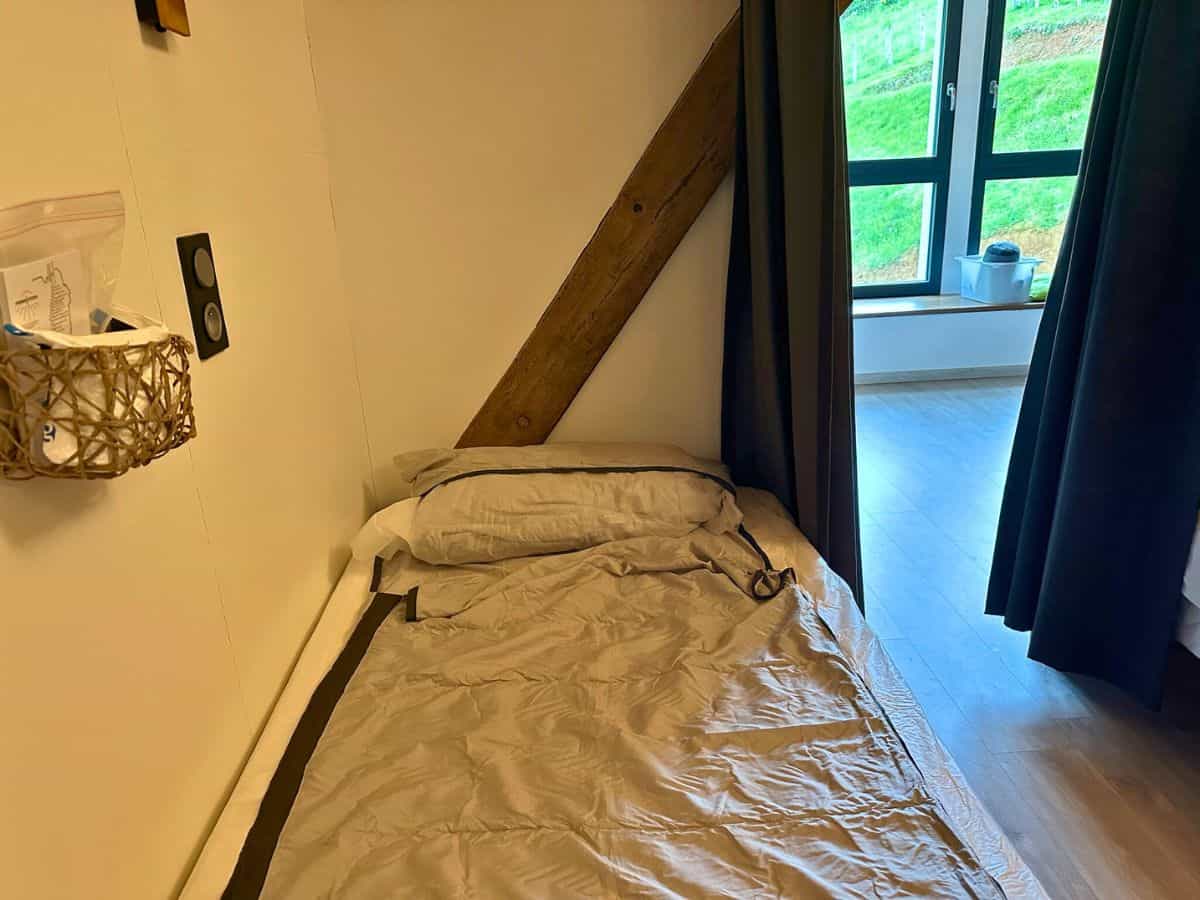
These are the most iconic – and most budget-friendly – lodging option for pilgrims.
- Public (municipal) albergues are simple and often operate on a first-come, first-served basis.
- Private albergues can usually be booked ahead and sometimes (but certainly not always) offer extra comforts: smaller dorm rooms, privacy curtains, or private bathrooms.
These hostel-type accommodations are a great choice for solo pilgrims or those looking to embrace the full communal spirit of the Camino.
Some of our favorite albergues on the Camino Francés included Aubergue Borda (past Orisson in the Pyrenees), Albergue Estrella Guia in Puente la Reina, and Agora Hostel in Estella.
Pensiones & Casas Rurales
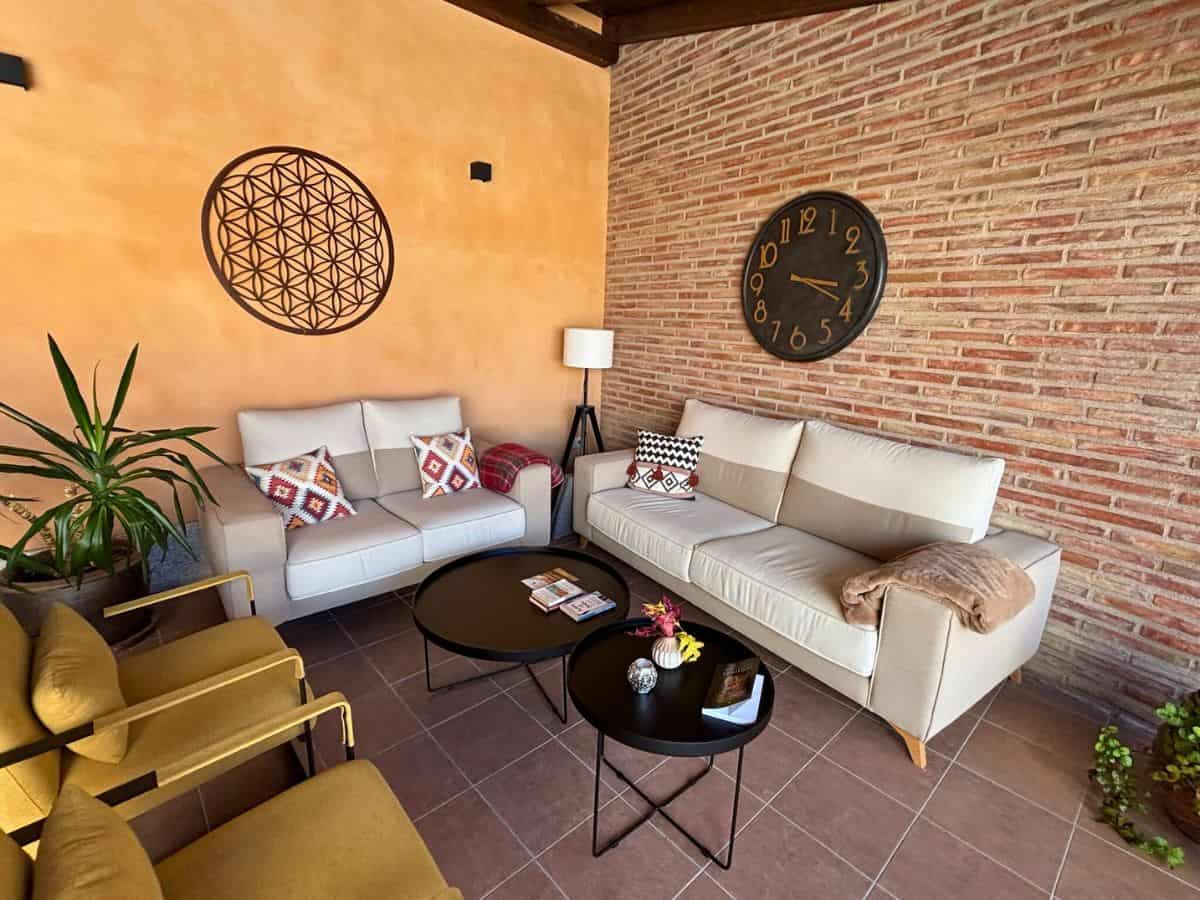
Pensiones are small inns or guesthouses, often family-run. Casas rurales are similar – usually private homes that offer private rooms to pilgrims, often with a small breakfast included.
They’re cozy, often quiet, relatively affordable, and a nice step up in comfort and privacy without being too expensive.
Bathrooms here may be private or shared; be sure to check when booking if that’s a priority for you.
Some of our favorite inns and guesthouses on the Camino Francés included Posada Ignatius in Navarrete, Casa Rural La Plaza in Azofra, and Casa Rural Donde Cristina in Grañón.
Paradores and Other Splurges

If you want to treat yourself occasionally, Paradores – luxury hotels often in historic buildings – are the ultimate splurge.
We didn’t stay in one ourselves, but one of our Camino friends stayed at the Parador de Santo Domingo de la Calzada and raved about it. Other options include the Parador de León (perfect if you’re taking a rest day) and of course, the ultimate splurge: the Parador Santiago de Compostela once you reach Santiago.
Another “splurge” option for Camino Francés accommodations is booking an apartment rental through Vrbo, particularly when taking a rest day. We rented an apartment in Burgos and loved the extra space to stretch out.
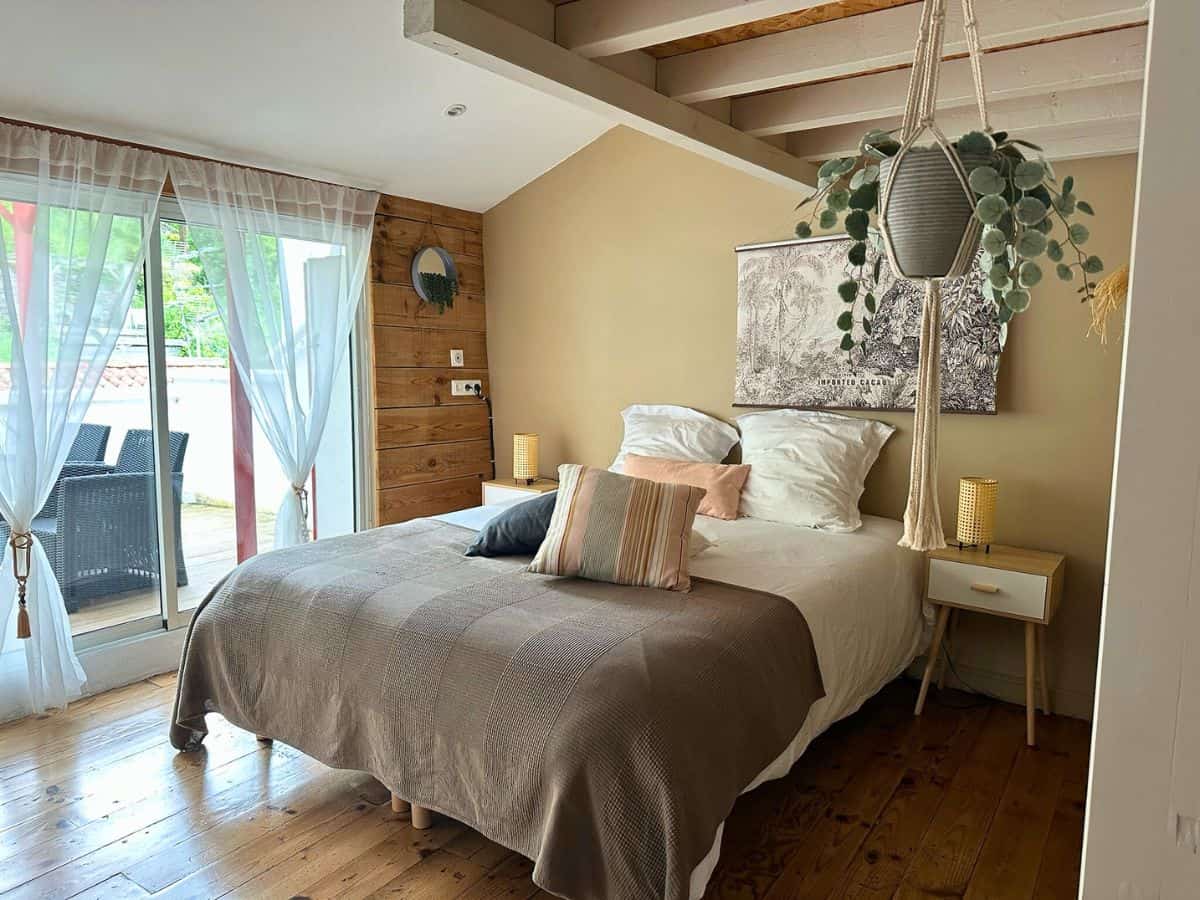
And if you’re looking for more space to stretch out before beginning your journey from Saint-Jean-Pied-de-Port, we loved our studio (with a full kitchen) at Plan B, located in the heart of town.
Staying On-stage vs. Off-stage on the Camino: What It Means and Why It Matters
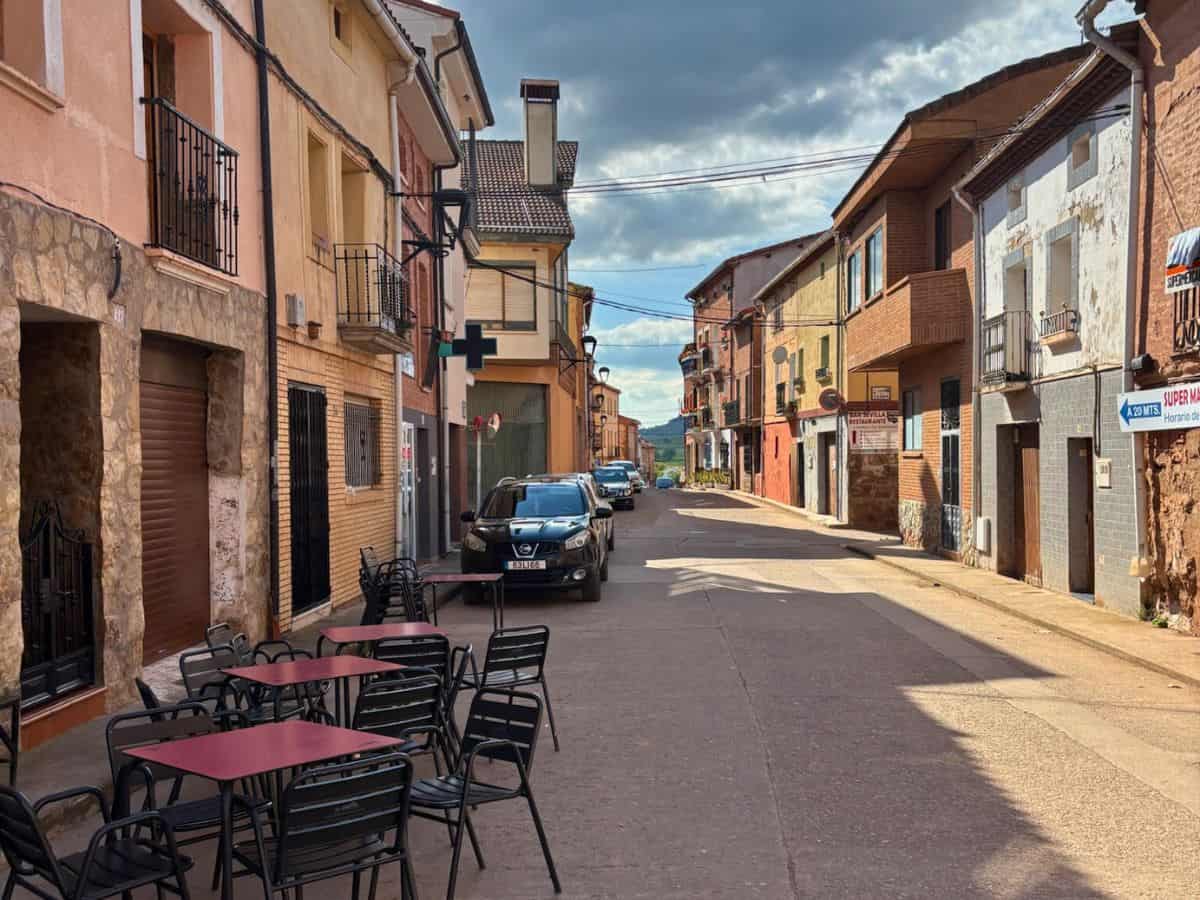
If you’re wondering where to stay on the Camino Francés, one of the most important decisions you’ll make is whether to follow traditional on-stage stops, or go a bit off the guidebook.
What Does “On-stage” Mean?
Popular guidebooks (like Brierley’s) and planning sites like Gronze.com lay out a series of recommended daily stops.
Most pilgrims walking the Camino Francés stick to these stages, which means most of the Camino Francés accommodations get booked here.
For these reasons, these are known as on-stage towns.
Why stay on-stage?
- Easy to plan (just follow guidebook stages)
- More pilgrims = more opportunity for social connection
- More infrastructure (restaurants, pharmacies, grocery stores)
What Is “Off-stage”?
Off-stage towns, quite simply, are any towns the Camino passes through that are not on-stage – not traditional starting or stopping points.
Why stay off-stage?
- You want to customize stages to your preferred walking distance
- Fewer crowds, quieter evenings
- Sometimes better availability during busy months
We chose to go off-stage several days and really loved the experience. In fact, one of our coziest stays – and one of the best meals we had on the Camino – was in the tiniest village we stayed in: Azofra, just past Nájera.
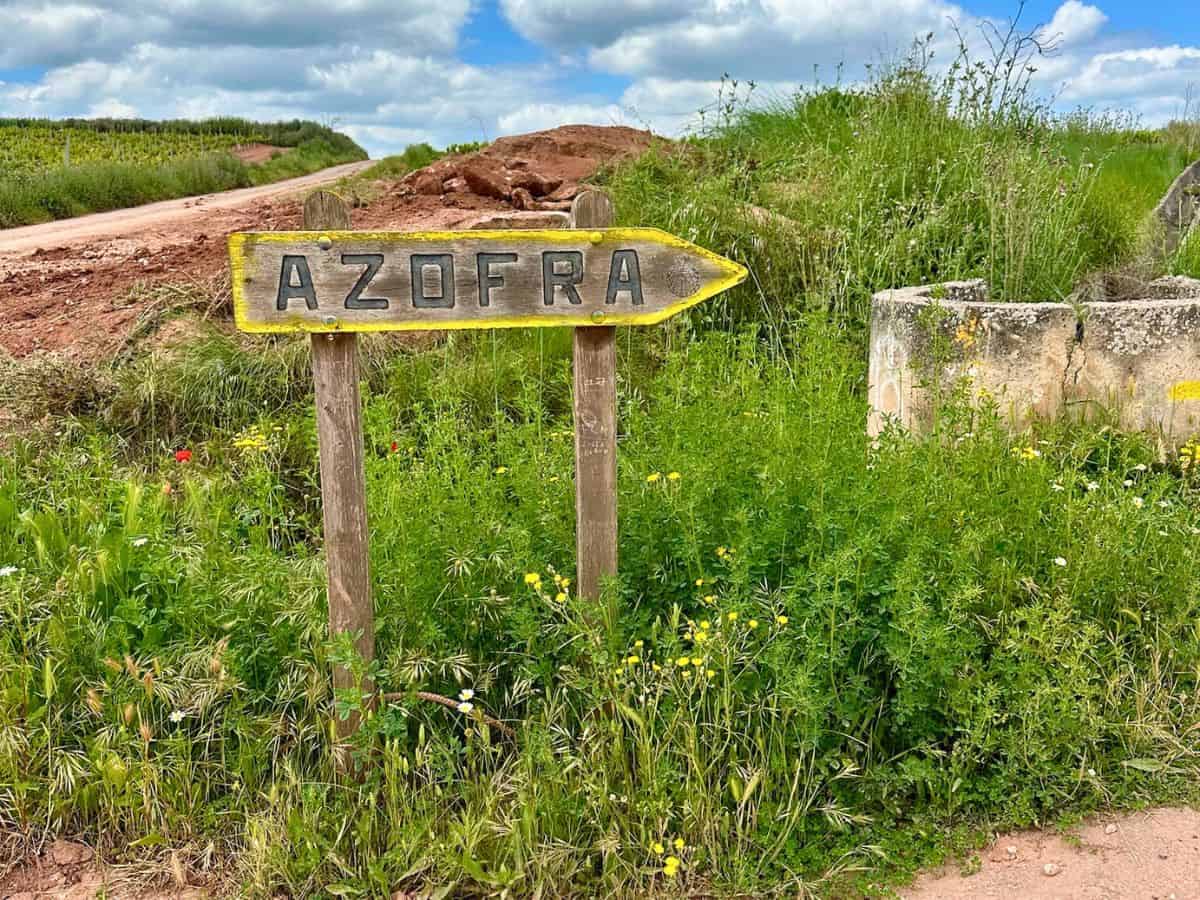
That evening, we were sitting outside with a glass of wine when a Zumba class kicked off a few doors down. The music was blasting, the energy was contagious, and when we peeked in, the instructor gave us a huge smile and invited us to join. We laughed and politely declined, but it was one of those fun, spontaneous moments that made the town feel special.
Just one of the small joys that can come with staying off-stage.
Needless to say, even if you mostly stay on-stage, we think it’s worth trying an off-stage night or two. It adds variety and brings a different rhythm to your Camino.
Just go in knowing that services may be more limited, and you’ll likely see fewer pilgrims – both in town and along the trail.
How to Book Accommodations on the Camino Francés
When it comes to booking Camino accommodations, most people fall into one of three camps:
- Walk and book as you go: You decide how far to walk each day, then find a bed in person or online. This works well for spontaneous travelers, but does come with risks. In peak months, last-minute options can be limited, and we saw several pilgrims turned away after arriving without a reservation.
- Book everything in advance: You plan your entire itinerary before setting out. This offers peace of mind, especially during busy seasons (like May, June, and September) and for on-stage stops. The downside? Less flexibility to adjust your plans mid-walk.
- Hybrid strategy: Some pilgrims will book their first few nights in advance, then book the rest as they go, or a few days a head. This gives you a feel for how your body handles the distances without locking you into a rigid schedule.
If you choose to book ahead, look for free cancellation policies whenever possible. We like to book through a single platform like Booking.com, which centralizes our bookings. That flexibility gives you freedom to adjust your plans mid-Camino, sometimes even the day before.
One thing that helped us tremendously was tracking everything in a spreadsheet – including stage lengths, dates, accommodation names, and any notes about the stay. We kept it accessible on our phones, and it was incredibly useful while on the move every day.
Where to Stay on the Camino Francés: Tips for Choosing What’s Right for You
You can (and should) consider others’ perspectives on Camino accommodations – it’ll prepare you for what lies ahead. But choosing the right Camino Francés lodging depends more on you than anything else.
Know Your Travel Style
Are you social? Curious about community? Try albergues – especially early in the walk. At a minimum, you’ll make acquaintances. But you’ll likely make friends.
Do you prefer privacy, calm, or quiet evenings? Book a mix of albergues and private rooms. It’s okay to prioritize some alone time on the Camino.
We enjoyed both – albergues gave us connection and community, while private rooms helped us recover and recharge.
Comfort vs. Cost
If you’re walking the Camino on a tight budget, albergues will be your best option – they’re the most affordable, especially if you’re walking solo.
That said, private rooms can be surprisingly affordable, especially when shared with a walking partner or new friend.
And don’t be afraid to splurge every now and then – a hotel with a hot shower and plush towels can feel amazing after days of walking.
Final Thoughts: Where to Stay on the Camino Francés

Whether you’re planning every stop in advance or deciding as you go, staying in bunk beds or private rooms, the Camino will meet you where you are. With a little planning and a little flexibility, trust that you’ll find accommodations that support your body, your mindset, and your reason for walking.
Planning to Walk the Camino De Santiago?
Check out our resources for walking:
- Walking the Camino for Someone Else: A Walk with Purpose
- Daily Camino Routine: A Day in the Life of a Pilgrim
- Walking the Camino Francés in Sections
- Camino Packing Tips: What We Loved – and What We’d Leave
- Camino Francés for Beginners: Advice for Planning and Walking
- 7 Reasons to Walk the Camino – And Why You’ll Find More
- Camino Francés Surprises: 9 Things You Might Not Expect
